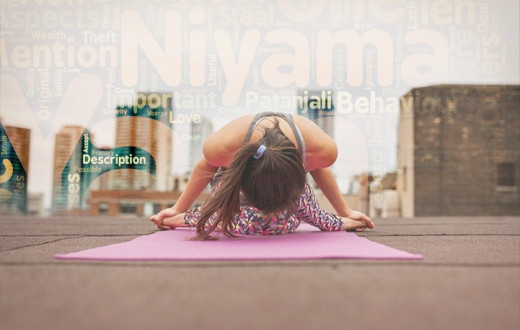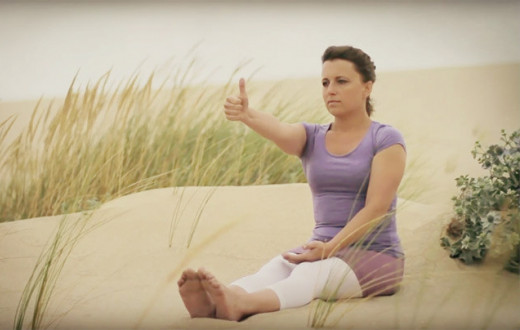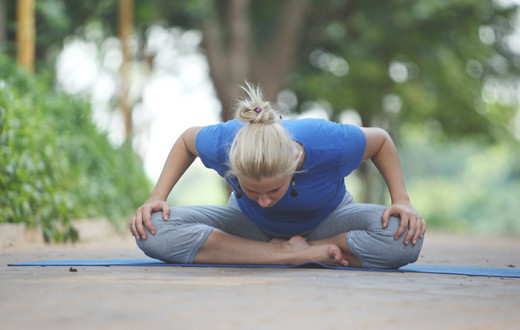Posted: February 16, 2018
Attending yoga classes is a great way to motivate yourself to maintain a practice. However, when it comes to creating a sustainable practice, it is important to cultivate the skill of doing yoga on your own, without reliance on a teacher. Creating a home yoga practice is like riding a bike, and only attending classes is like riding with the training wheels on. Once you learn to remove the training wheels and practice on your own, you have the freedom to develop your authentic style! While it is necessary to have proper instruction from a trained teacher, it is also necessary to learn to integrate the knowledge you learn in class by practicing at home. Not only that, but developing a home practice and becoming comfortable with self-guidance has the added benefit of allowing you to take yoga with you wherever you travel. When you can practice alone, you can practice anywhere!
Developing a home practice gives you the freedom to practice on your own time. It also eliminates your commute, saving you time and money.
Here are a few tips to keep in mind as you prepare for a fun yoga practice at home:
#1 Choose a convenient time
Practicing yoga in the morning is generally considered to be ideal, as it keeps energy levels high throughout the day and centers you before engaging filling your mind with the day’s to-do’s. Yet, if the morning does not work for you or you sleep in, do not let it be an excuse to skip your practice. What is important is that you choose a time that works best for you. It could be late mornings, before lunch, or evenings. Yoga at any time of day is an amazing way way to refresh the mind and release accumulated stress.
#2 Create Your Yoga Space
Have you ever noticed a shift in your energy when you enter a yoga studio? Spaces dedicated to meditation and yoga are filled with positive vibrations and create optimal conditions for spiritual practice. However, you do not have to leave your home to practice yoga in a high-vibration space. If possible, designate a small, private, distraction-free room in your house for daily yoga. Over time, your practices will create positive vibrations in the room, facilitating a deeper practice.
However, if setting up a separate room is not possible, choose a quiet space anywhere within your home that is large enough for a yoga mat and where you will not be disturbed.
Make sure that the space is clean, well-ventilated, and away from furniture and sharp objects.
#3 Practice on an Empty Stomach
Yoga is best practiced on a light or empty stomach. Ideally, wait 2-3 hours after a meal to begin. By practicing on an empty stomach, you allow your body to focus energy on physical exertion, rather than digestion. Otherwise, discomfort and disrupted digestion are likely to occur.
#4 Simplify Your Yoga Wear
Nowadays, yoga studios are filled with women (and men) sporting the latest yogi fashion. One major benefit of practicing at home is being free from the material distraction of those around you. Opt for loose, comfortable clothing. Some of the best yoga is done in pajamas! Also, avoid excessive jewelry and heavy makeup.
#5 Warm up
Warming up before putting your body into intense postures is as important as warming up before running a marathon. Without a warm up, you run the risk of straining a muscle. Start with gentle postures to wake up your body before moving on to more intense postures.
#6 Be Gentle
Respect your body and remember to smile (seriously!). Forcing your body into poses beyond your body’s capabilities will not bring faster results, and will only lead to injury, discomfort, and an overall unenjoyable practice. Savor the opportunity to listen to your body and do what feels good.
#7 Be consistent
As with anything, consistency is necessary to see results. Make yoga a part of your daily schedule (as mentioned above, find a time slot where you can comfortably fit yoga in), and over time sitting down on the mat will become a habit, rather than an effort. Krishan Verma, senior Sri Sri Yoga teacher says, "Twenty minutes of daily yoga practice is more likely to show positive results sooner than two hours of occasional practice."
#8 Make Yoga Time Family Time
If you are concerned about becoming bored while practicing alone, don’t be! Still, if you enjoy doing yoga in the company of others, try practicing with family or friends. Practicing yoga at home can be a great way to bond as a family and create a culture of health.
#9 Mix It Up
If you find yourself feeling bored or uninspired with your home practice, chances are you may need to add variety to your sequences. Be sure to vary your postures and breathing techniques to keep yourself motivated and excited. Mixing up your practice regime also keeps your body challenged and assures that you engage your body’s full range of motion.
#10 Don’t Forget the Corpse!
No matter how little time you have, always include at least one or two minutes of Savasana (Corpse Pose) at the end of your practice. While often seen as an easy and trivial posture, Savasana is actually the most important and challenging posture, as it both integrates your work from the entire practice into your body and requires that you fully let go and enter into a subtle state of consciousness. Corpse pose offers deep relaxation and healing, so don’t skimp yourself! Give yourself the rest you deserve!
Remember that yoga does not only refer to physical postures. A well-rounded home yoga practice includes other yogic techniques, such as pranayama (breathing exercises), meditation, and Sudarshan Kriya (if you have done the Happiness Program).
While a regular yoga practice can result in improved health, know that it is not a substitute for medical treatment. It is important to learn and practice yoga postures under the supervision of a trained teacher. In the case of a medical condition, practice yoga postures after consulting a doctor.Contact us at programs@us.artofliving.org to find a Sri Sri Yoga course at an Art of Living Center near you.





























